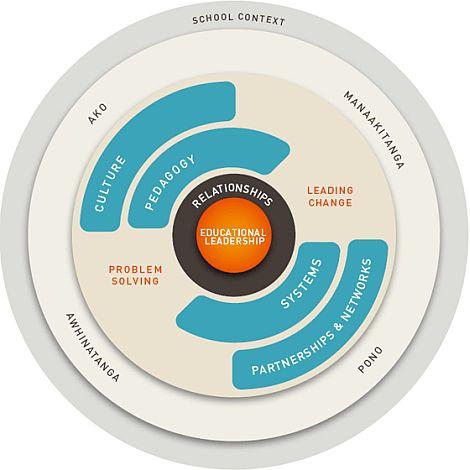The educational leadership model
About the model
The educational leadership model (ELM) sets out the qualities, knowledge, and skills that middle and senior educational leaders need to lead their schools in the twenty-first century.
This model shows that relationships are at the core of school leadership and that leadership always operates within a specific context. It also identifies areas of practice, leadership activities, and the qualities of effective leadership.

Educational leadership
All educational leaders, including middle and senior leaders, are responsible for leading in ways that:
- improve outcomes for all students, with a particular focus on Māori and Pasifika students and students with special education needs;
- create the conditions for effective teaching, learning, and curriculum delivery;
- explore and promote the use of ICT and e-learning to open up new ways of connecting, sharing, and learning;
- develop schools as learning communities;
- build networks within and beyond their schools to enhance learning and achievement;
- develop others as leaders.
Areas of leadership practice: culture, pedagogy, systems, partnerships and networks.
Leadership activities: problem solving and leading change.
Leadership qualities: manaakitanga, pono, ako, awhinatanga.
